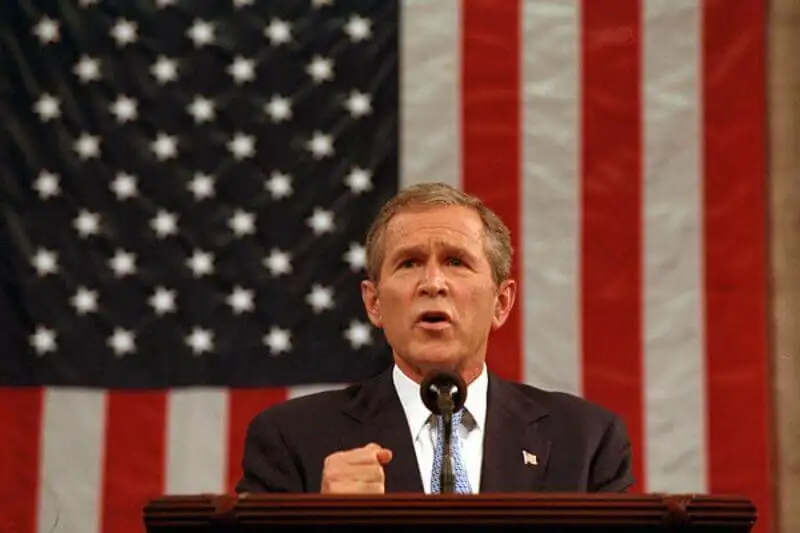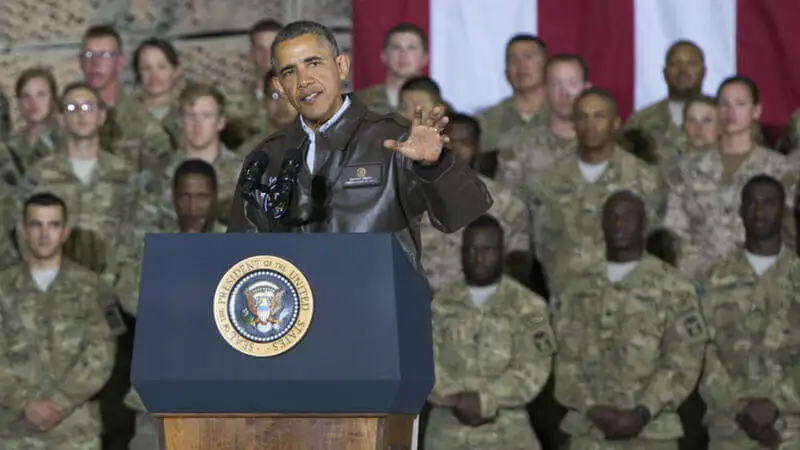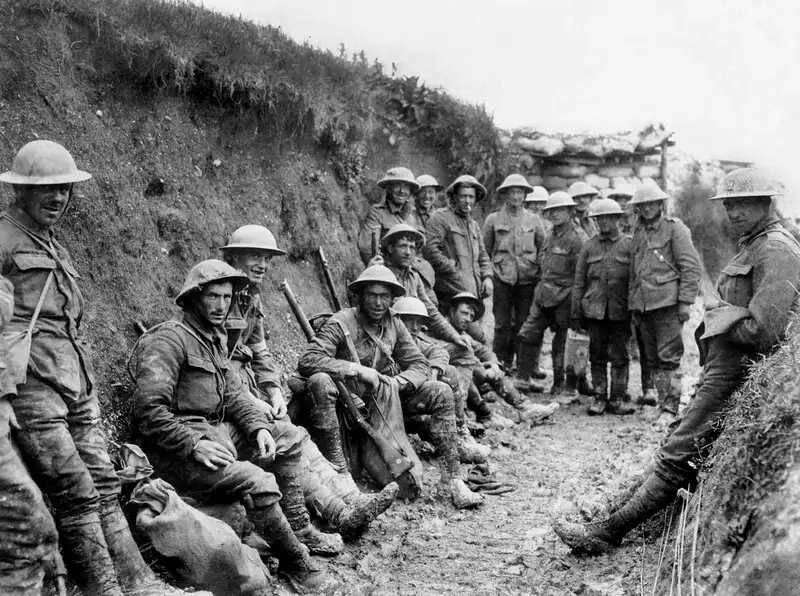The United States initiated the Afghanistan War after the terrorist attacks on September 11, 2001. This two-decade conflict, spanning four U.S. presidents, stands as the longest war in American history.
By August 2021, the war began to draw to a close as the Taliban regained control of the country, just two weeks before the U.S. was set to complete its military withdrawal. The conflict claimed tens of thousands of lives and cost approximately $2 trillion. Below, Pywar outlines the key events of this tumultuous war.
The War on Terror Begins
Investigations determined that the September 11, 2001, attacks—in which four commercial airliners were hijacked, with two crashing into the World Trade Center’s Twin Towers in New York, one into the Pentagon near Washington, D.C., and one into a field in Pennsylvania—were orchestrated by a terrorist group operating from Afghanistan, then under Taliban control, an extremist Islamic movement.
Behind the plot that killed over 2,700 people was Osama bin Laden, the leader of al-Qaeda. It was believed that the Taliban, which had seized power in Afghanistan in 1996 following the Soviet occupation, was sheltering bin Laden, a Saudi Arabian citizen.

- The Twin Towers in the U.S. engulfed in flames during the 9/11 attacks. (Source: Collected)
In a speech on September 20, 2001, President George W. Bush demanded that the Taliban hand over bin Laden and other al-Qaeda leaders to the United States, or “share in their fate.” The Taliban refused.
On October 7, 2001, U.S. and British forces launched Operation Enduring Freedom, conducting airstrikes on al-Qaeda and Taliban targets in Kandahar, Kabul, and Jalalabad over five days. Ground forces followed, and with support from the Northern Alliance, the U.S. swiftly overran Taliban strongholds, including the capital, Kabul, by mid-November.
By December 6, Kandahar fell, marking the official end of Taliban rule in Afghanistan and forcing al-Qaeda and bin Laden to flee.
Shifting to Reconstruction
In a speech on April 17, 2002, President George W. Bush called for a Marshall Plan-style reconstruction of Afghanistan, with over $38 billion approved by the U.S. Congress for humanitarian aid and training Afghan security forces. In June of that year, Hamid Karzai, a leader of the Popalzai Durrani tribe, was selected as head of the interim government.
Approximately 8,000 U.S. troops remained in Afghanistan as part of the NATO-led International Security Assistance Force (ISAF). However, in 2003, the U.S. military shifted its focus to the war in Iraq. That same year, Defense Secretary Donald Rumsfeld declared that “major combat operations” in Afghanistan had ended.
Shortly thereafter, a new constitution was enacted, and on October 9, 2004, Afghanistan held its first democratic election since the war began. Hamid Karzai won and served two five-year terms as president.
As ISAF shifted its focus to peacekeeping and reconstruction, the U.S. continued its war in Iraq, giving the Taliban an opportunity to reorganize and intensify attacks.

- President George W. Bush speaking on reconstruction plans. (Source: Collected)
Troop Surge Under Obama
In a statement on February 17, 2009, newly elected President Barack Obama pledged to send an additional 17,000 U.S. troops to Afghanistan by summer, joining the 36,000 American and 32,000 NATO troops already deployed. He stated, “This increase is necessary to stabilize a deteriorating situation in Afghanistan, which has not received the strategic attention, direction, and resources it urgently requires.” U.S. troop levels peaked at around 110,000 in Afghanistan in 2011.
In November 2010, NATO nations agreed to transfer control to Afghan security forces by the end of 2014. On May 2, 2011, after a decade-long manhunt, U.S. Navy SEALs located and killed Osama bin Laden in Pakistan.
Following bin Laden’s death, amid pressure from lawmakers and the public to end the war, Obama announced plans to withdraw 33,000 U.S. troops by summer 2012 and all troops by 2014. In June 2013, NATO formally handed over control to Afghan forces. In 2014, Obama unveiled a new withdrawal plan, retaining 9,800 U.S. troops to continue training local forces.

- President Obama addressing the troop surge strategy in Afghanistan. (Source: Collected)
Trump: ‘We Will Fight to Win’
In 2015, the Taliban escalated its attacks, including bombing the parliament building, Kabul airport, and carrying out multiple suicide bombings.
In the early months of his presidency, Donald Trump granted the Pentagon autonomy in combat decisions in Afghanistan. On April 13, 2017, the U.S. dropped the most powerful non-nuclear bomb, dubbed the “Mother of All Bombs,” on an ISIS cave complex.
In August 2017, Trump addressed U.S. troops, vowing, “We will fight to win” in Afghanistan. He declared, “America’s enemies must never know our plans or believe they can wait us out.”
As Taliban terrorism intensified, the U.S. began peace talks with the group in February 2019. An agreement emerged, with the U.S. and NATO pledging a full withdrawal within 14 months if the Taliban ensured it would not harbor terrorist organizations.

- President Trump pledging to continue the fight against terrorism. (Source: Collected)
However, in September, Trump canceled the talks after a Taliban attack killed a U.S. soldier and 11 others. “If they cannot agree to a ceasefire during these very important peace talks and would even kill innocent people, then they don’t have the capacity to negotiate a meaningful agreement,” Trump wrote on Twitter.
Nevertheless, on February 29, 2020, the U.S. and Taliban signed a peace deal, despite ongoing Taliban attacks and U.S. airstrikes. In September 2020, the Afghan government and Taliban resumed negotiations, and in November, Trump announced plans to reduce U.S. troop levels in Afghanistan to 2,500 by January 15, 2021.
U.S. Withdrawal from the Afghanistan War
Joe Biden, the fourth president to oversee the war, set a symbolic deadline in April 2021: September 11, 2021—the 20th anniversary of the 9/11 attacks—for the complete withdrawal of U.S. troops from Afghanistan. The final withdrawal process began in May.
Within 10 days, from August 6 to 15, 2021, the Taliban rapidly captured provincial capitals Kandahar, Mazar-e-Sharif, and finally Kabul with little resistance. As the Afghan government collapsed, President Ashraf Ghani fled to the UAE, the U.S. embassy was evacuated, and thousands of Afghans flocked to Kabul’s airport to escape.
On August 14, Biden temporarily deployed about 6,000 U.S. troops to assist evacuation efforts. Facing criticism over the Taliban’s swift return to power, Biden stated, “I am the fourth president to preside over an American troop presence in Afghanistan—two Republicans, two Democrats. I will not, and would never, pass this war on to a fifth.”

- U.S. troops preparing to withdraw from Afghanistan. (Source: Collected)
In the Afghanistan War, over 3,500 Allied troops perished, including 2,448 Americans, with more than 20,000 injured. Research from Brown University estimates that approximately 69,000 Afghan security personnel, 51,000 civilians, and 51,000 Taliban fighters were killed. According to the United Nations, since 2012, about 5 million Afghans have been displaced, making Afghanistan the world’s third-largest source of refugees.
Conclusion
The Afghanistan War, spanning two decades from the 9/11 attacks to the full withdrawal in 2021, left a profound toll with hundreds of thousands dead and millions displaced. The conflict not only marked a shift in power in Afghanistan but also deeply impacted global economics and politics. Through this article, Pywar hopes you gain a clearer understanding of the war’s developments, consequences, and lessons.
Don’t forget to explore more articles on world war history and the latest events!
Translated by: Le Tuan
Source: history.com – Afghanistan War








